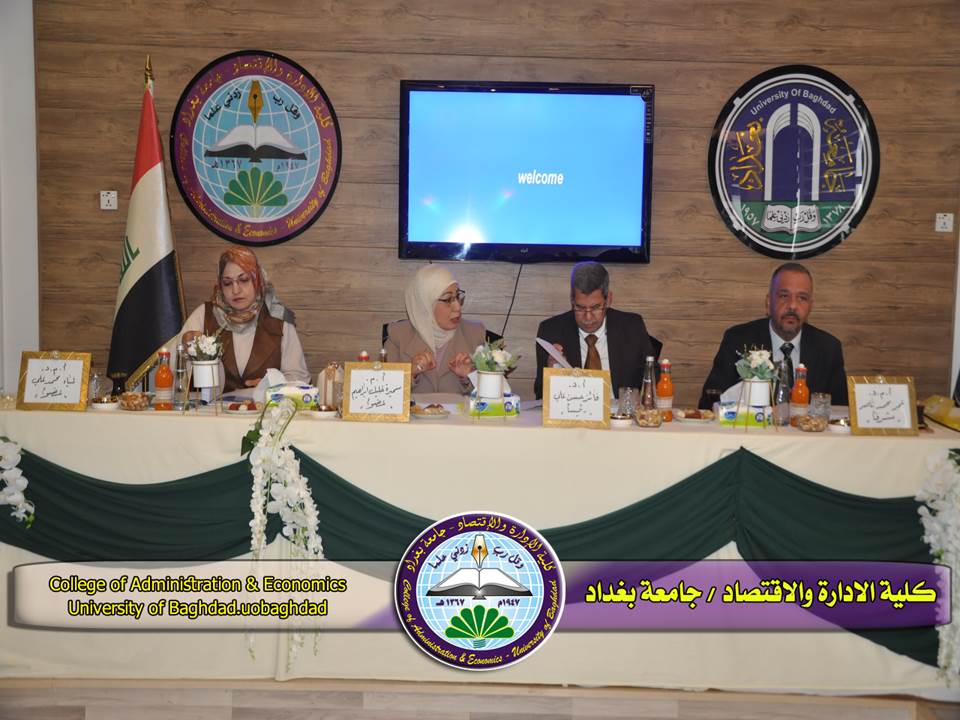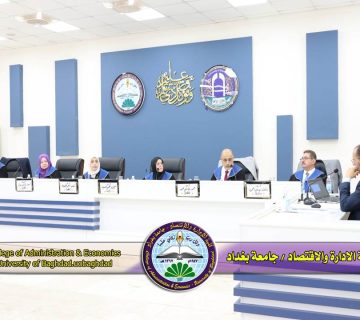The College of Administration and Economics at the University of Baghdad discussed , a master’s thesis in field of Operations Research by the student ( Hadeel Khudair Abbas) and tagged with ( Improving the Performance of Fuzzy Queuing Systems Using Lean Six Sigma Technique with Application ) , Under supervision of (Assist.Pro.Dr. Omar Mohammed Naser )
The research aims to investigate the impact of applying Lean Six Sigma methodology on improving the performance of fuzzy-queued waiting lines. Fuzzy waiting lines theory and the Lean Six Sigma approach are essential tools for enhancing the efficiency of immigration department services. Fuzzy waiting lines deal with reducing waiting time and increasing customer satisfaction by improving service organization. On the other hand, Lean Six Sigma methodology focuses on process improvement by reducing variation and waste, enhancing quality, and efficiency. The Lean Six Sigma approach provides a structured framework for process improvement through specific stages, including problem identification, current performance measurement, data analysis, process improvement, and control. The research also aims to identify the causes leading to waiting in immigration departments, which in turn contribute to their decreased service quality. The study intends to propose appropriate solutions, determine service levels for employees and citizens, and address any existing issues to achieve a Six Sigma level. To achieve these research objectives and reduce defects, the researcher adopted the DMAIC methodology (Define – Measure – Analyze – Improve – Control). The study utilized statistical software (SPSS) to extract DMAIC stages and employed Six Sigma metrics such as DPO (Defects Per Opportunity) and DPMO (Defects Per Million Opportunities) for both employees and citizens to calculate the Six Sigma level. The researcher also used the ranked set sampling technique to convert fuzzy rates into conventional rates for performance measurement.The findings of the study revealed that employees operated within the first level of Six Sigma, while citizens were within the second level. There was a significant and inverse effect of Lean Six Sigma principles on waiting times. The study calculated customer arrival time and service time for each service stage in the department, extracted the arrival and service rates, and found performance metrics for the model (Ls, Lq, Ws, Wq) for all stages. Data analysis was conducted using Win QSB software, leading to the desired results.The researcher recommended adding service channels for all stages to reduce system congestion. The total waiting time for citizens from entering the immigration department until receiving their passports was long. One of the crucial recommendations was to conduct a detailed analysis of the reasons for defects and errors in each of the five dimensions (top management support and commitment, organizational culture, training, quality, and organizational strategy). This analysis would help identify weak points and areas that need improvement .Furthermore, the study emphasized the importance of management familiarizing employees with Lean Six Sigma techniques through training courses, conferences, and seminars. Regularly collecting data on waiting times and the number of errors should be done to monitor performance. Using this data for informed decisions on how to improve processes and enhance citizen experiences is crucial.











